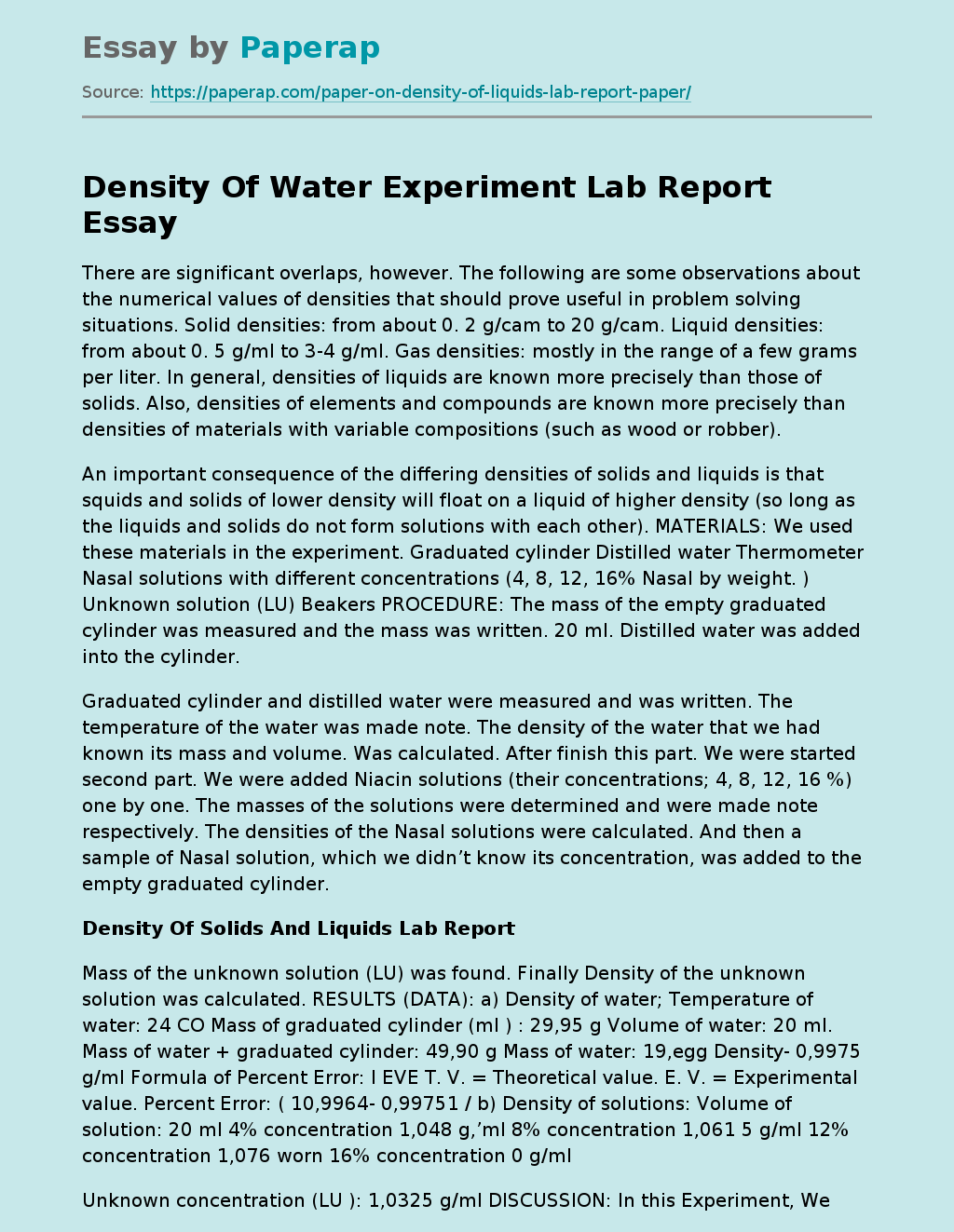There are significant overlaps, however. The following are some observations about the numerical values of densities that should prove useful in problem solving situations. Solid densities: from about 0. 2 g/cam to 20 g/cam. Liquid densities: from about 0. 5 g/ml to 3-4 g/ml. Gas densities: mostly in the range of a few grams per liter. In general, densities of liquids are known more precisely than those of solids. Also, densities of elements and compounds are known more precisely than densities of materials with variable compositions (such as wood or robber).
An important consequence of the differing densities of solids and liquids is that squids and solids of lower density will float on a liquid of higher density (so long as the liquids and solids do not form solutions with each other). MATERIALS: We used these materials in the experiment. Graduated cylinder Distilled water Thermometer Nasal solutions with different concentrations (4, 8, 12, 16% Nasal by weight. ) Unknown solution (LU) Beakers PROCEDURE: The mass of the empty graduated cylinder was measured and the mass was written.
20 ml. Distilled water was added into the cylinder.
Graduated cylinder and distilled water were measured and was written. The temperature of the water was made note. The density of the water that we had known its mass and volume. Was calculated. After finish this part. We were started second part. We were added Niacin solutions (their concentrations; 4, 8, 12, 16 %) one by one. The masses of the solutions were determined and were made note respectively. The densities of the Nasal solutions were calculated.
And then a sample of Nasal solution, which we didn’t know its concentration, was added to the empty graduated cylinder.
Density Of Solids And Liquids Lab Report
Mass of the unknown solution (LU) was found. Finally Density of the unknown solution was calculated. RESULTS (DATA): a) Density of water; Temperature of water: 24 CO Mass of graduated cylinder (ml ) : 29,95 g Volume of water: 20 ml. Mass of water + graduated cylinder: 49,90 g Mass of water: 19,egg Density- 0,9975 g/ml Formula of Percent Error: I EVE T. V. = Theoretical value. E. V. = Experimental value. Percent Error: ( 10,9964- 0,99751 / b) Density of solutions: Volume of solution: 20 ml 4% concentration 1,048 g,’ml 8% concentration 1,061 5 g/ml 12% concentration 1,076 worn 16% concentration 0 g/ml
Unknown concentration (LU ): 1,0325 g/ml DISCUSSION: In this Experiment, We were learned how can we find the density of the liquids, by using the formula. But we found different results some of them. For example density of water is 0,egg/ml at ICC temperature but we found 0,9975 g/ml I think that change may be, temperature wasn’t determined well or we washed the graduated cylinder with distilled water and we didn’t dry well. So that these factors changed the results. On the other hand, If we had taken 30 ml water instead of 20 ml of water. The density would have been same.
Density Of Water Experiment Lab Report. (2019, Dec 05). Retrieved from https://paperap.com/paper-on-density-of-liquids-lab-report-paper/

